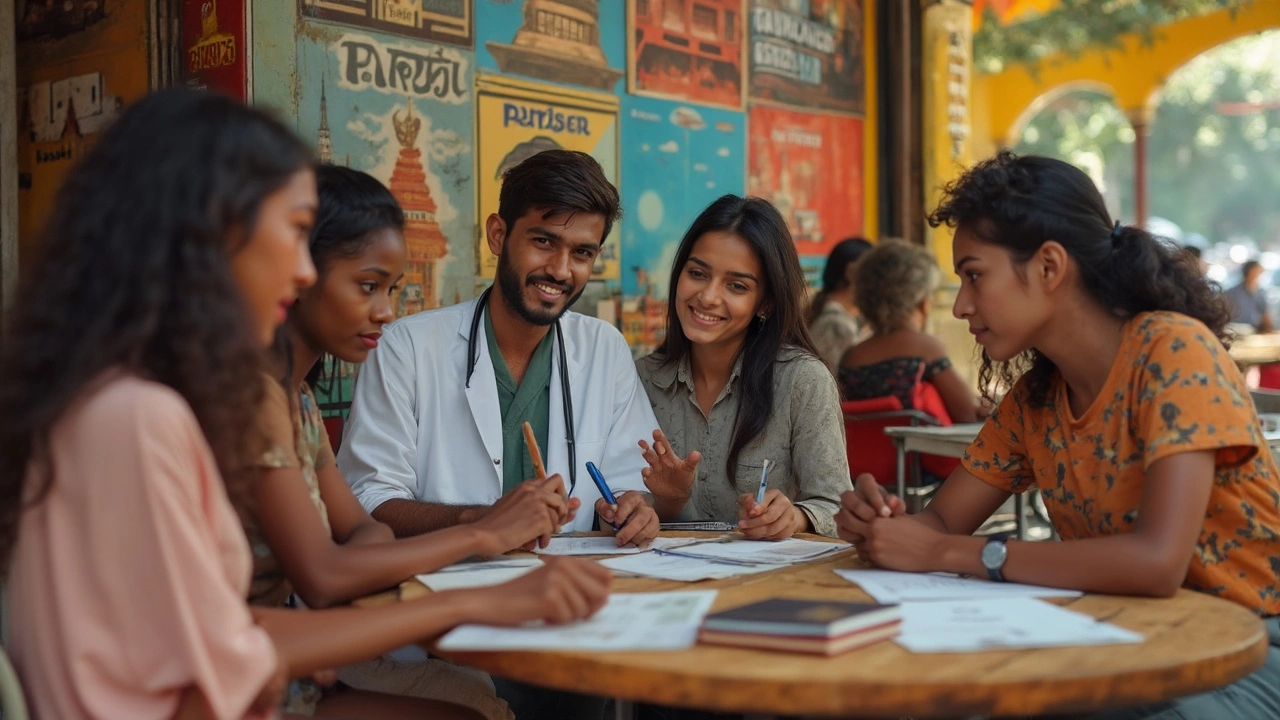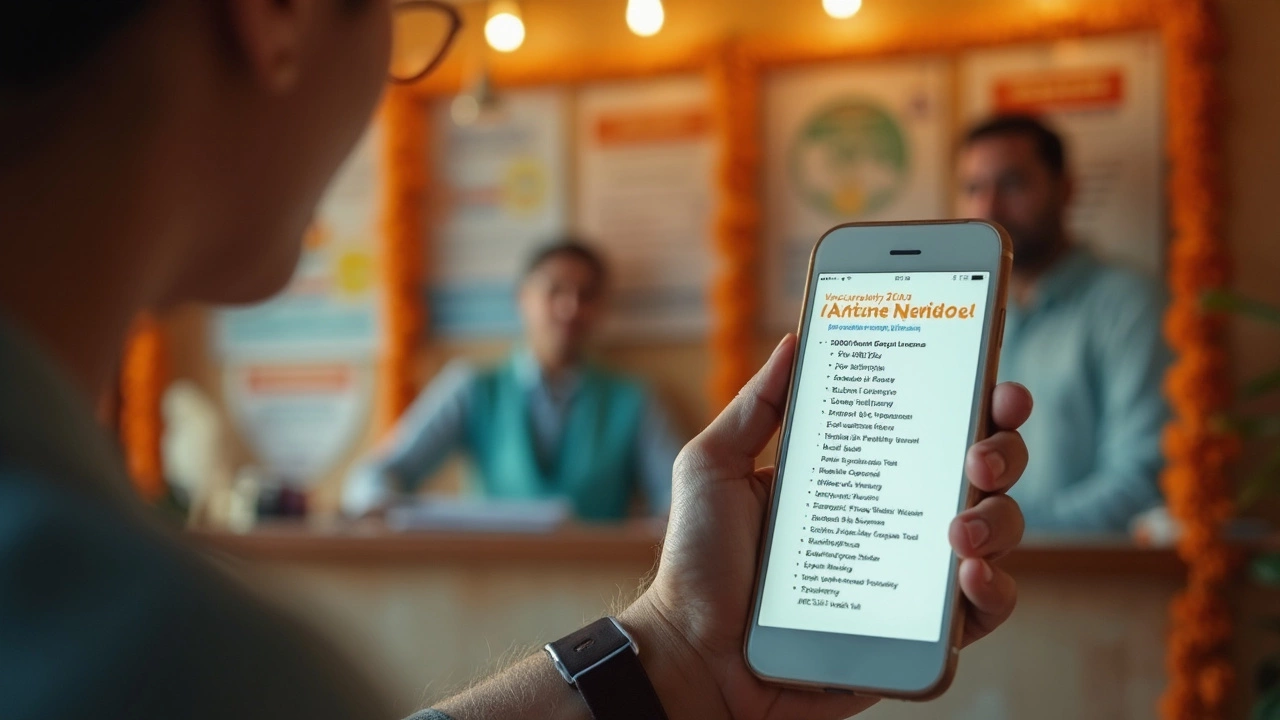Do Americans Need Vaccines to Go to India? Your 2025 Guide
 May, 5 2025
May, 5 2025
Thinking of heading to India and wondering about the vaccine requirements? This stuff isn’t just paperwork—nobody wants their dream trip ruined by a bug they could’ve dodged. For Americans, India doesn’t actually force most travelers to get vaccines, but there are a couple of exceptions that could mess with your plans if you’re not careful. Plus, some shots aren’t required but skipping them is just asking for trouble, especially if you’re rolling on a tight budget and can’t afford much downtime.
Let’s cut to the chase: if you’re arriving from the US straight to India, there’s no law saying you have to show proof of routine vaccines at the airport. But if you’re coming from, or spending more than 12 hours in an area with yellow fever—think parts of Africa or South America—India will turn you away if you can’t show your yellow fever shot record. Hard to believe, but plenty of travelers get tripped up by a long layover and end up missing their flight over this.
- Which Vaccines Are Mandatory?
- Recommended Shots You Shouldn’t Ignore
- Where to Get Vaccinated on a Budget
- Travel Tips for Staying Healthy in India
Which Vaccines Are Mandatory?
Here’s the deal: India doesn’t require American travelers to show proof of most vaccines. You won’t get stopped at customs for missing your hepatitis or typhoid shot. But the one big exception is yellow fever. If you’ve been in a country where yellow fever is common—think parts of Africa or South America—even just for a long layover in an airport, India expects you to show a valid yellow fever vaccination certificate when you arrive. No certificate, no entry. They’re strict about it, and you could end up in quarantine or sent right back home.
Apart from yellow fever, there’s nothing else that’s officially mandatory for entry from the United States. Here’s a quick breakdown to keep it clear:
- If you’re flying only from the US or other non-yellow-fever countries: No vaccines are mandatory for Americans to enter India.
- If your flight itinerary touches a yellow fever risk country—even just for a few hours: You must have a yellow fever certificate. No exceptions.
| Country of Departure | Mandatory Vaccine |
|---|---|
| United States | None |
| Yellow fever risk country (includes layover) | Yellow Fever |
So, don’t stress about routine vaccines holding up your trip if you’re traveling a straight shot from the US. Double-check your layover details, though—it would really suck to fork over hundreds for a missed flight just because of an overlooked twelve-hour stop in Brazil or Ghana.
Recommended Shots You Shouldn’t Ignore
Seriously, just because a vaccine isn’t “required” at the border doesn’t mean you should skip it. Getting sick in India isn’t just about cutting your fun short—it can wreck your budget and land you in some real trouble if things get serious. For most American travelers, doctors and the CDC suggest several travel vaccines that make sense if you’re planning anything from street food binges to train-hopping adventures in India.
- Hepatitis A: Pretty much a must-have, since the virus can spread through food and water—even in restaurants that look pretty nice. It can knock you out for weeks, and hospital stays in India can get pricey for foreigners.
- Typhoid: You can easily catch this through contaminated water or food. If you’re going off the beaten path, or just love eating local, this one’s a no-brainer.
- Hepatitis B: Spread by blood or other body fluids—think medical procedures or even a tattoo or barbershop slip-up. Worth it if you’re staying for a while.
- Tetanus & Diphtheria: If your routine shot’s over 10 years old, get a booster. Scraping your knee or a small cut is more common than you think, especially in busy cities or on hiking trails.
- Rabies: Not required, but if you’ll be spending lots of time outdoors or in rural areas (or can’t resist a stray dog or monkey), it’s worth considering. Rabies treatment is time-sensitive and getting the shots after exposure isn’t always straightforward in India.
- Japanese Encephalitis: Not for everyone, but important if you’re planning to spend a lot of time in rural areas during rainy season or if you’ll be in India for a month or more.
Check out how different vaccines stack up in terms of risk and need for most American travelers to India:
| Vaccine | Risk Level for Travelers | Recommended For |
|---|---|---|
| Hepatitis A | High | Everyone |
| Typhoid | Moderate | Street food lovers, rural visits |
| Hepatitis B | Moderate | Long stays, medical procedures |
| Rabies | Low-Moderate | Backpackers, animal exposure |
| Japanese Encephalitis | Low | Long rural stays, rainy season |
And just as a heads up: India does report outbreaks of diseases like measles or mumps every now and then. So, double-check your routine vaccines for India (MMR, polio, etc.) are up to date before getting on the plane. It’s cheaper to handle these in the States than scrambling for care after you get sick abroad.

Where to Get Vaccinated on a Budget
Paying full price for travel vaccines in the US can be a gut punch, especially for anyone planning budget travel India style. But you can dodge big bills with a few smart moves. Pharmacies like CVS, Walgreens, and Rite Aid often offer the basic shots, and their websites usually show prices. Sometimes, your insurance will cover routine vaccines, but don't count on it for stuff like typhoid or Japanese encephalitis.
Local health departments are worth checking out—they sometimes run clinics specifically for travel vaccines and usually charge way less than private doctors. College campus clinics might let non-students in for a fee, so if you’re near a university, it’s worth asking.
- Yellow fever shots need to come from an approved center. The CDC has an online search tool you can use to find clinics by zip code. Not every place stocks this, so plan at least a month ahead.
- Typhoid can be a pill or a shot—sometimes the pill version is a bit cheaper, and it lasts longer. Find out which option works best for your trip and wallet.
- Big chains usually don’t carry rabies or Japanese encephalitis vaccines, but travel clinics do. These are pricy in the US (up to $400 a dose!). If you’re feeling daring, many seasoned travelers suggest getting them in India—major cities have clean, reliable clinics offering vaccines for India for a lot less money.
If you already have travel insurance, check if it covers part of the vaccine cost or telehealth consults—saves you a trip and sometimes a few bucks. And don’t forget bulk options: if you’re traveling with friends, some clinics offer group discounts if you all book together.
| Vaccine | U.S. Price | India Price (Major Cities) |
|---|---|---|
| Typhoid (shot) | $120+ | $25-$40 |
| Japanese Encephalitis | $300-$400 | $50-$70 |
| Yellow Fever | $180+ | N/A (not given in India) |
Book your vaccine appointments early—last-minute scramble usually means paying more. And hang on to your records. You'll need them if you end up somewhere that wants proof, or have a long layover in a yellow fever zone.
Travel Tips for Staying Healthy in India
India is incredible, but it’s also tough on the stomach and immune system—especially for first-timers. Staying healthy isn’t about paranoia, it’s just about being smarter than the germs and the street food that might look tempting but isn’t always a good idea.
Here’s a rundown for American travelers who want to avoid getting knocked out by illness:
- Drink bottled or filtered water only. Tap water and ice are risky almost everywhere. Buy sealed water bottles (check the cap isn’t tampered with) or use a trusted water filter like LifeStraw on longer trips.
- Be picky with street food. If it’s cooked fresh, steaming hot, and tons of locals are eating there, it’s usually safe. Skip stuff washed with water, like salads or cut fruit, unless you prepare it yourself.
- Hand sanitizer is your friend. Carry a pocket bottle and use it before eating, after handling money, or touching any public surfaces.
- Stick to your vaccines for India and basic travel meds. Carry the usuals: ibuprofen, rehydration salts, and maybe a broad-spectrum antibiotic if your doctor suggests it. Pharmacies (chemists) are everywhere in cities and usually cheap by American standards.
- Watch for mosquitoes. Malaria and dengue are both real threats in parts of India, mostly during and after the monsoon (June–September). Use bug spray with DEET, sleep with a net if you’re in a rural area, and wear pants at dusk.
If you do get sick, most cities have walk-in clinics where visits might set you back only $10–$20. Private hospitals are a lot better than you’d guess and usually happy to treat tourists.
For extra peace of mind, here’s a quick look at health risks and solutions:
| Risk | Prevention | Common Region |
|---|---|---|
| Traveler’s Diarrhea | Bottled water, careful food choices | Everywhere |
| Malaria/Dengue | Mosquito repellent, bed nets | Rural regions, during monsoon |
| Typhoid | Typhoid vaccine, food hygiene | Cities & small towns |
Don’t mess around with health stuff—any money you save by skipping needed travel vaccines or ignoring health requirements could easily get wiped out by a hospital visit. And nothing ruins a trip like being stuck in a hotel room with a fever while your friends are out exploring.